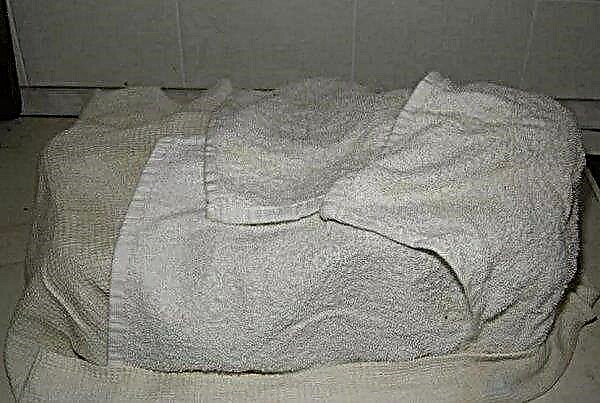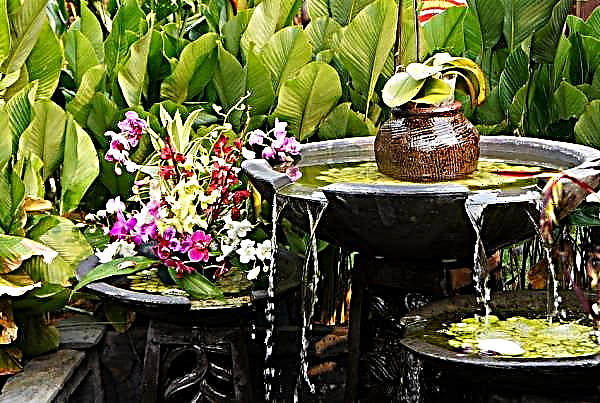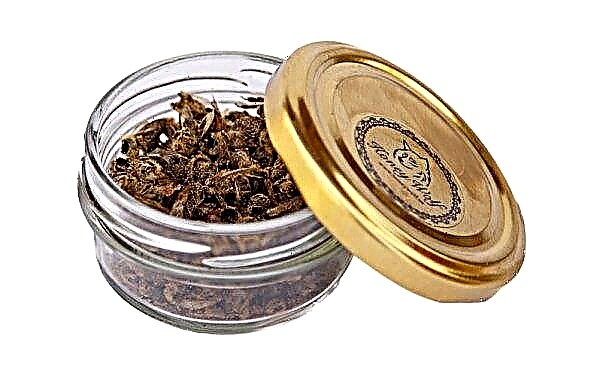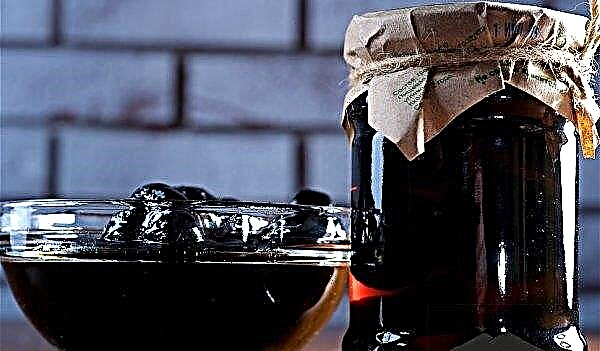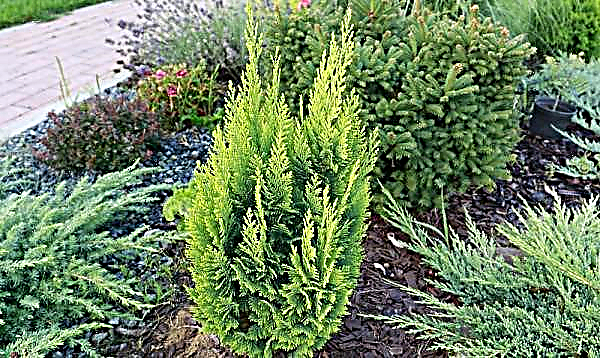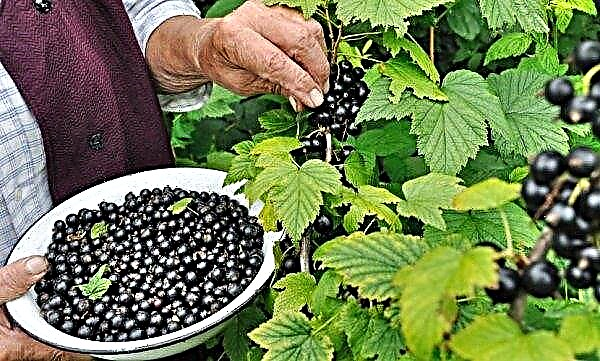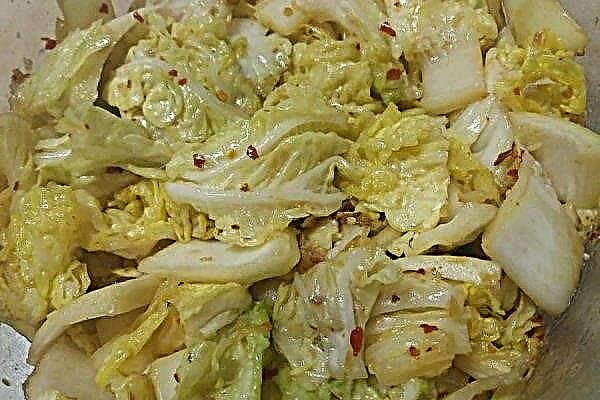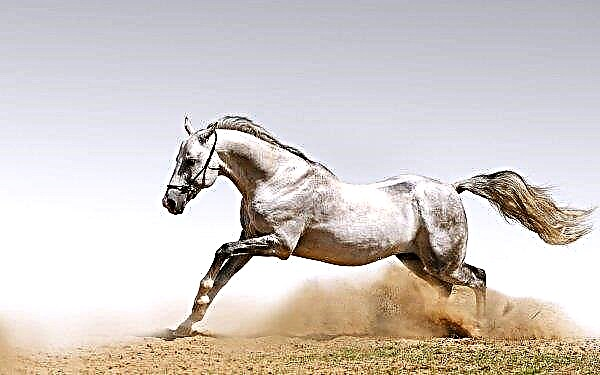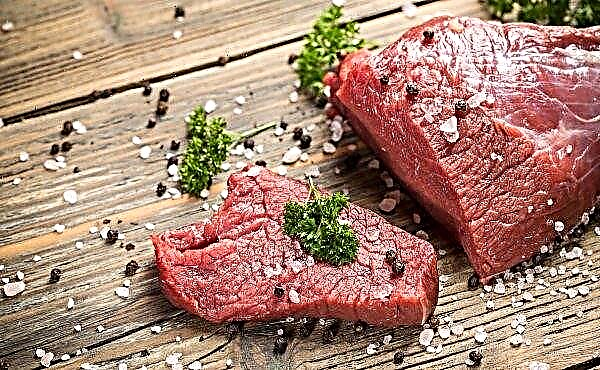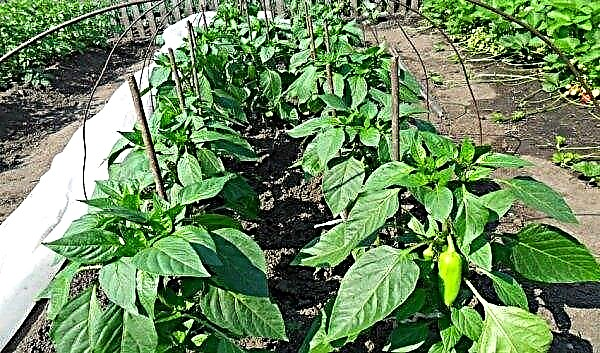Beekeepers tend to look for the perfect breed. After all, apiary productivity for the most part depends on bees. And if you spend money and time, then you need to know the basic characteristics of the breeds, how they differ from others, and which bees are better. In the article you will find information about the breeds of karnik and karpatka, which will help you in the search.
Feature and Features
All breeds of honey bees have their own beneficial characteristics. Sometimes they are reinforced if suppliers do not sell a clean pedigree line. This is because most queen bees can mate with drones of any breed that they will encounter during the mating flight, so the beekeeper often cannot guarantee the breed of sperm obtained by the queen.
Did you know? It is believed that bees have been living on Earth for about 30 million years. Their remains were found in sediments of the Tertiary period. While the age of homo sapiens — just a few tens of thousands of years.
An absolutely clean line is obtained by artificial insemination of the “queen bee”. And such bees are very expensive. When deciding on a purchase, you need to consider this feature and only then proceed with the comparison of the presented breeds.
Origin
Karnika (Apis mellifera carnica, Pollmann) comes from Slovenia, southern Austria and parts of Croatia, Bosnia and Herzegovina, Serbia, Hungary, Romania and Bulgaria. It is a subspecies of the Western honey bee. Karnika adapted to the climate of Eastern Europe, the Austrian Alps and the Northern Balkans. It is extremely popular and ranks second in Europe after the Italian breed.
The exact origin of the Carpathian bees has not been established. Among the breeds that could be its founders, are called both the Ukrainian steppe and alpine bees. The natural habitat is the Carpathians. The corresponding reserve includes 4 regions: Lviv, Chernivtsi, Ivano-Frankivsk, Transcarpathian. To preserve the pedigree line, the import of other breeds into the territory of the conservation zone is prohibited.
Appearance and features of oviposition
Karnika has a dark brown color with a silvery pubescence. Dark chitin has lighter dots and stripes. The proboscis length of the working individual is 6.6 mm. The mass of the working individual is 100 mg, the uterus is infertile - 185 mg, the fetal - 205 mg. Her egg production is 1400–2000 eggs per day. Carpathian is not too different in size. Her proboscis is up to 7 mm long. The mass of insects, respectively: 110 mg / 185 mg / 205 mg. Color is gray. In the 1960s, they tried to improve the Carpathian breed, so today there are several in-breed varieties named according to the distribution area: synevyr, Rakhovsky, Goverla, Maikop. The Rakhovskys acquired a dull silver hue, while the Maykop ones acquired some yellowness, not typical for Carpathian bees. Egg production of a bee is 1200–1800 eggs per day.
Color is gray. In the 1960s, they tried to improve the Carpathian breed, so today there are several in-breed varieties named according to the distribution area: synevyr, Rakhovsky, Goverla, Maikop. The Rakhovskys acquired a dull silver hue, while the Maykop ones acquired some yellowness, not typical for Carpathian bees. Egg production of a bee is 1200–1800 eggs per day.
Recommended Breeding Regions
Both breeds can be grown in Russia, Ukraine, Belarus, and the Caucasus. They are quite hardy and adapted to the climate of these territories.
Did you know? People began to get honey back in the Stone Age. And the first evidence that they began to breed bees dates back to Ancient Egypt. We can say that beekeeping, as a type of activity, is now about 6 thousand years old.
Description of the bee
The uterus of the Carpathian breed can have several color options: from dark cherry to almost black. The average weight of an infertile individual is 210 mg, and the egg laying one is 218 mg. Strawberry bee is characterized by the following dimensions: barren weight - 180 mg, ovipositing - up to 250 mg. The color is dark brown with light stripes. According to beekeepers, it can begin to lay eggs already at a temperature of + 5 ° C, so by the spring honey collection the family will have time to gain strength. 1. The uterus of the Carpathian breed; 2. The uterus of the strawberry.
1. The uterus of the Carpathian breed; 2. The uterus of the strawberry.
How do bees behave
Both breeds are peaceful. They are not aggressive when examined by a beekeeper. The peculiarity of carpathians is that they can take a large amount of honey from forbs due to the length of the proboscis, so families are provided with honey even with low flowering honey plants. Karnika can be bred even in an urban area. They are well oriented in unfamiliar areas, quite peaceful and not inclined to steal honey from others.
How to tolerate wintering
Both breeds are equally resistant to cold winters and tolerate an adverse climate. They quickly build up the strength of the bee family and are able to create large stocks of honey for wintering.
Important! Beehives can not be placed near highways, mobile communications towers. Noise interference can be a source of constant stress, which causes the death of bees.
Karnika prepare for wintering in advance. Feed is used sparingly. They do not require special conditions and can winter in a hive with a wall thickness of 4 cm. Warming is required if the air temperature in the region during frosts drops below -20 ° C. The required amount of feed for the winter is about 25 kg.
Disease resistance
Strawberries are resistant to ticks, mortar toxicosis, acarapidosis and paralysis. In winter they can get nosemotosis. The bee sore is extremely rare.
Breed productivity
The honey productivity of the Carpathian bees is 30–40 kg of honey. Strawberry productivity - 40–42 kg.
Advantages and disadvantages of breeds
Consider the positive and negative qualities of representatives of both breeds:
| Carpathian breed | Karnika | |
| Advantages |
|
|
| disadvantages |
|
|
Features of breeding and maintenance
In the spring, beekeepers carry hives out of the winter hut. The air temperature at this time should not be lower than + 12 ° C during the day. If the family is strong and has enough feed, then you don’t need to rush too much with the transfer. If the insects are restless, or there are spots of diarrhea in the hive - it is worthwhile to endure them earlier. The hive space is cleaned of snow, drinkers are prepared and in the morning on a quiet sunny day, the hives are set up on prepared places. Lets for flyby do not open immediately. It is also necessary to conduct an inspection of the results of wintering, cleaning the bottom from scorching, check for the presence of the uterus and brood frames. If the uterus is dead, then a new one must be planted. If the hive has less than 10 kg of honey, then a frame with honey for feeding is added to it. Preheat it. In the absence of a spare framework, put a feeder with syrup.
It is also necessary to conduct an inspection of the results of wintering, cleaning the bottom from scorching, check for the presence of the uterus and brood frames. If the uterus is dead, then a new one must be planted. If the hive has less than 10 kg of honey, then a frame with honey for feeding is added to it. Preheat it. In the absence of a spare framework, put a feeder with syrup.
Important! On a sunny day, hives cannot be checked. At this time, the bees are especially active and can show maximum aggression.
They contain bees in the hives. Multihulls are thought to be better suited for breeding and easier to maintain. If you need to relocate bees, then this work is also carried out in the spring. In addition, beekeepers check the framework and, if necessary, add empty vacuums for building up vacant young bees. The beekeeper also controls the state of the bee family and makes adjustments if there are signs of swarming or other behavioral features.
Strains of bee breeds, subspecies and their features
A strain is a rather fuzzy combination of genetic traits that characterize a particular group of honey bees. The characteristics of the breed include behavioral, habitat, breed reproduction line, and even breeding features. The classification cannot be called accurate due to many exceptions to the rules. But experts have their own markers that help them classify a specific bee species.
Other bee breeds
All bees are divided into 4 large groups: melliferous, giant, dwarf, Indian. For breeding, beekeepers use honeybees. Names usually characterize the region of their habitat. Most breeds are well adapted to temperate climates.
Cordovan
The term “cordovan” comes from the method of producing leather in Cordoba in Spain. It is distinguished by the color described as reddish brown or purple. The genetic feature of such bees is a specific color, which applies to working bees, and the uterus, and drones.
Did you know? According to one of the Greek legends, a swarm of bees settled on the grave of the founder of medicine of Hippocrates, who developed a special therapeutic honey.
Genetically Cordovan - not a breed, but Italian bees of a specific color. The normal yellow color of these insects brightens and expands, as a result of which these bees are called "golden". According to beekeepers, these bees take bribes well. By winter, the colony manages to create 5-7 brood frames and looks quite strong. They have a reputation for being very obedient. The uterus is considered to be very prolific, form huge colonies. A characteristic feature of such large colonies is a tendency to steal honey. This is not to say that this species is too widespread. It can be assumed that they are used by amateur beekeepers, since there is no data on their industrial use.
They have a reputation for being very obedient. The uterus is considered to be very prolific, form huge colonies. A characteristic feature of such large colonies is a tendency to steal honey. This is not to say that this species is too widespread. It can be assumed that they are used by amateur beekeepers, since there is no data on their industrial use.
Buckfast
Buckfast (Buckfast) was obtained by crossing many subspecies around 1919 in Buckfast (UK). Her breeding now occurs throughout Europe. The color of the insects is similar to the old Italian honey bee - it is quite dark.
- Among the advantages include:
- uterine fertility;
- low instinct of swarming;
- gentleness of character;
- high resistance to diseases.
Backfast produces less propolis than other breeds, but winters very well, consumes feed economically, produces a lot of honey, and quickly grows the colony. According to reviews, this is the most flexible breed, allowing the beekeeper to work with a minimum amount of smoke.
Central Russian
Central Russian originated in the Primorsky Territory of Russia. One of its main characteristics is resistance to various types of parasitic ticks, which positively affects both the offspring and the amount of honey. The color of the insects is dark gray. Honey content - 30 kg per season. The breed is resistant to cold. It is considered moderately aggressive.
This type of honey bee is currently bred together with other types to produce tick-resistant breeds, so these insects are more expensive, but the cost pays off by saving on tick treatments and maintaining the bee family. When choosing bee breeds, pay attention to the speed of family building, melliferousness, as well as resistance to disease. To make a good choice, consider the climate and the main features of the breed.
When choosing bee breeds, pay attention to the speed of family building, melliferousness, as well as resistance to disease. To make a good choice, consider the climate and the main features of the breed.


